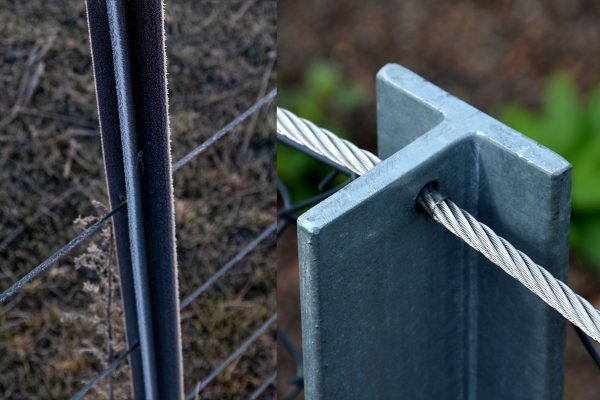If you've had a fence installed, you've probably seen the professionals use a post hole digger. Doing it yourself is going to be a little challenging, and we've received a lot of questions about the size of post hole diggers. In this post, we'll talk about post hole diggers and how they will help your fence installation.
A post hole digger comes in many different sizes and most of them range from around 4 to 12 inches in diameter. As a general rule, the post hole should be three times the size of the diameter of the post, and this should give you a rough estimate of what size you will need.
We know that it can get a little confusing trying to figure out the size of the post hole digger that you need to use. In this post, we will help you figure out the right post hole digger you should use. Keep reading because we will also share tips and ideas on how you can safely and properly install posts.
![A post hole digger with auger attached for digging post holes in the soil, How Big Is A Post Hole Digger? [What Size Do You Need?]](https://fencefixation.com/wp-content/uploads/2022/06/How-Big-Is-A-Post-Hole-Digger-What-Size-Do-You-Need-.png)
How Big Is A Post Hole Digger?
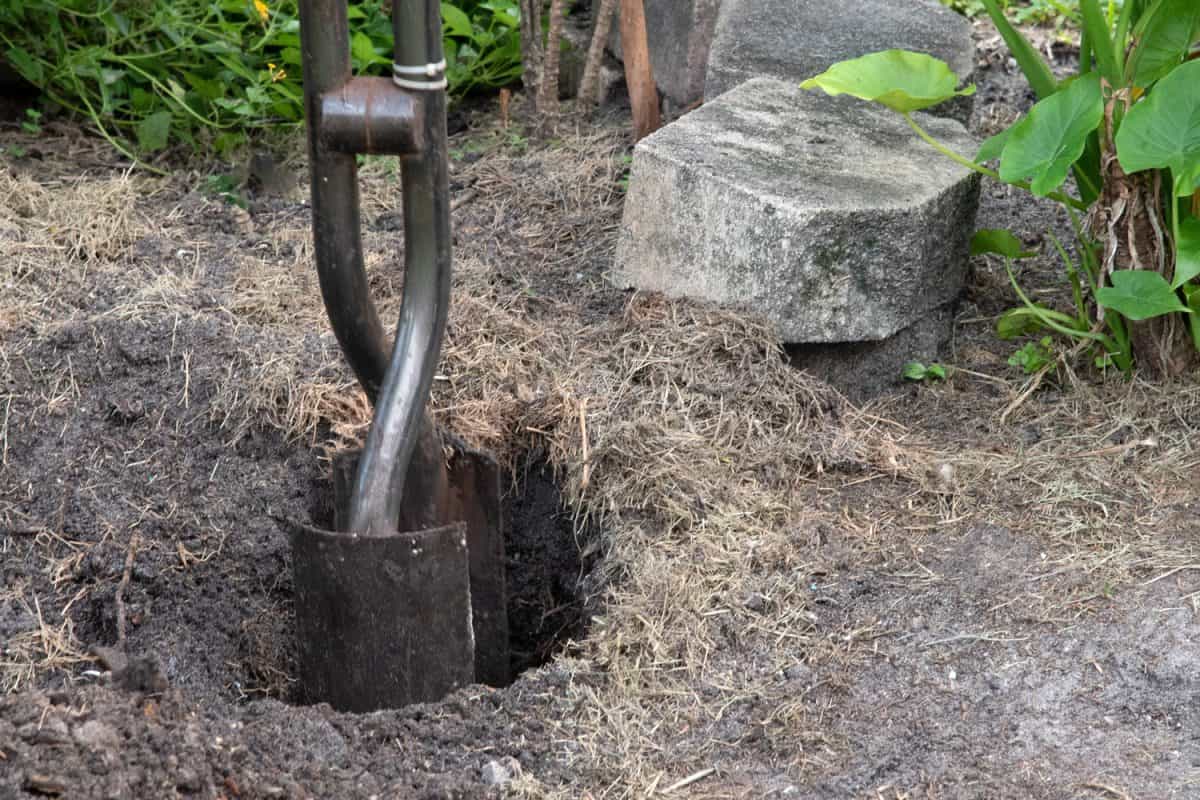
When installing fence posts, you've probably heard of a lot of tools and other items that you need for the installation. One of the things that are very important to have if you plan to install your own fence posts is a post hole digger.
A post hole digger is a tool that digs holes in the ground that allows users to set posts deep into the ground. A manual post hole digger can generally dig out a hole that is about 4" wide in diameter, and it has different-sized handles that can allow you to dig holes as deep as you need.
Manual post hole diggers are pretty straightforward to use, but it can be a bit challenging if you have to dig up a lot of holes. All you need to do is to open the handles and jab the blade down on the ground before closing it. You then pull it up to dig the soil out for your post hole.
Get this manual post hole digger on Amazon.
Since manual post hole diggers can be quite straining to use, powered versions of this tool have cropped up in the market to make the work easier. You can find gas-powered or electric-powered post hole diggers, but they are also commonly known as earth augers.
What Is The Difference Between An Auger And A Post Hole Digger?
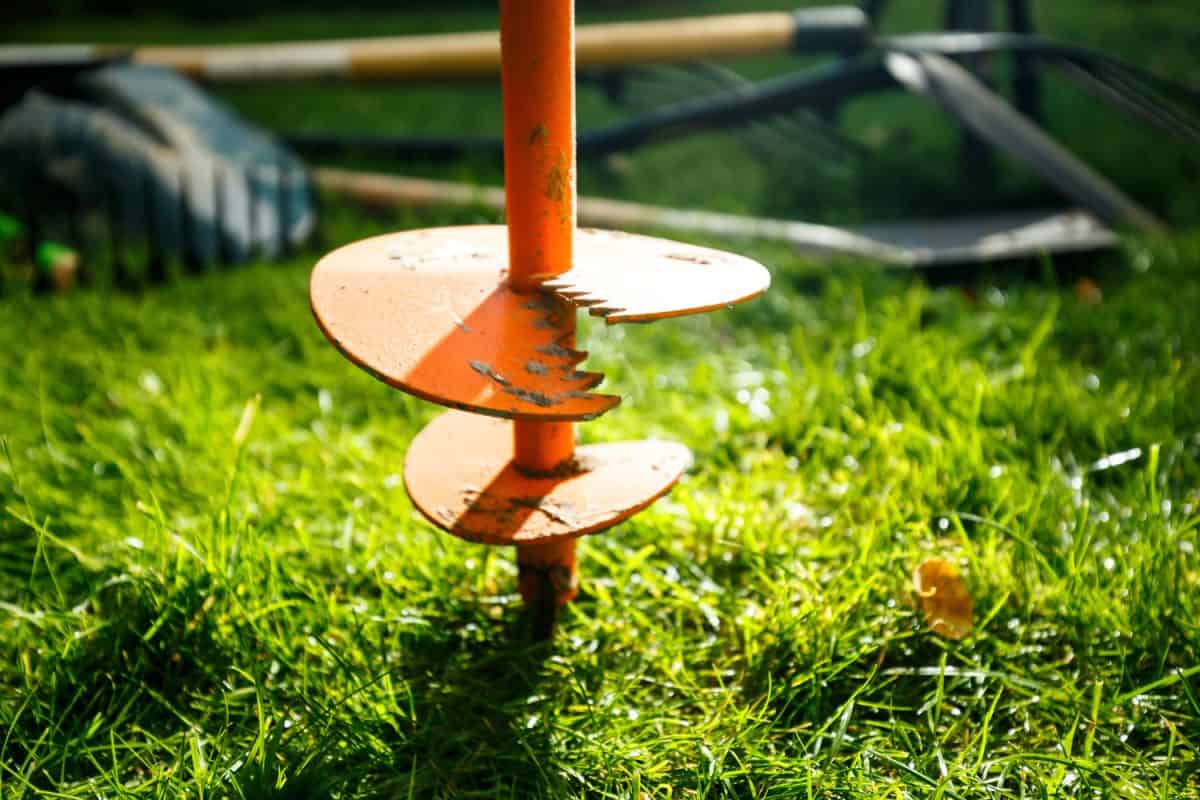
As we have explained earlier, a post hole digger is a manual tool that allows users to dig out a wide hole on the ground for setting posts. It requires the user to jab the blade of the post hole digger on the ground and close the handles in order to dig out the soil for the hole.
An auger is actually a post hole digger that also digs out a hole on the ground, but it does the job in a different manner. When you use an auger to create a post hole, it screws itself on the ground and it transports the dirt to the surface by transporting it through the blades.
There are different types of augers available, from manual to heavy-duty gas-powered earth augers. A manual auger is usually about 4" wide in diameter, and you simply need to dig the ground by rotating it on the soil.
Check out this manual auger on Amazon.
However, if you need to do a bigger job than just digging holes for plants, you should use a powered earth auger as your post hole diggers. These post hole diggers are very easy to use and very powerful, and you will surely get the job in no time.
What Size Post Hole Digger Do I Need?
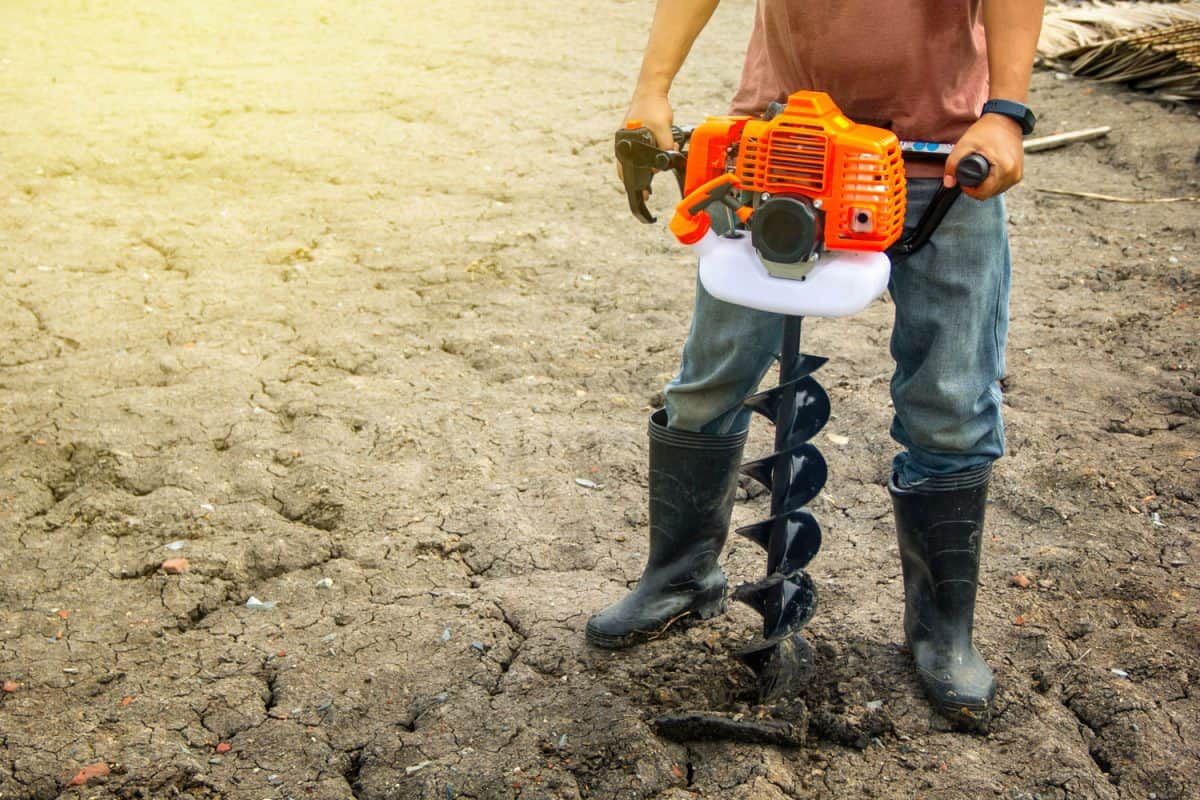
A powered post hole digger or earth auger has different sizes that you can choose from. When choosing a post hole digger, it is important that you know the size of your posts because this will directly affect the size of the digger you need to use.
Generally speaking, a post hole should be three times the size of the diameter of your posts. For example, a post measuring 2" wide in diameter should be placed and set in a hole that is three times its size—or 6" wide. A 6" post hole digger can easily make this hole in no time.
Most gas or electric-powered post hole diggers come in different sizes that are interchangeable for whatever size you need. They usually come in sets, ranging from 4" wide to 12" wide for big posts.
These post hole diggers are great to use on loamy soil, as well as hard, packed soil. However, it is important to note that these augers may not be powerful enough if your soil is very hard and rocky, as this might require a stronger material to properly dig the soil out.
Get this gas-powered post hole digger on Amazon.
To make it easier for you to figure out what size of post hole digger you should use, we've collected the typical sizes of posts that you can typically get.
Post Size
- 2 inches (50mm): 6 inches
- 3 inches (75mm): 9 inches
- 4 inches (100mm): 12 inches
How Deep Can You Go With A Post Hole Digger?
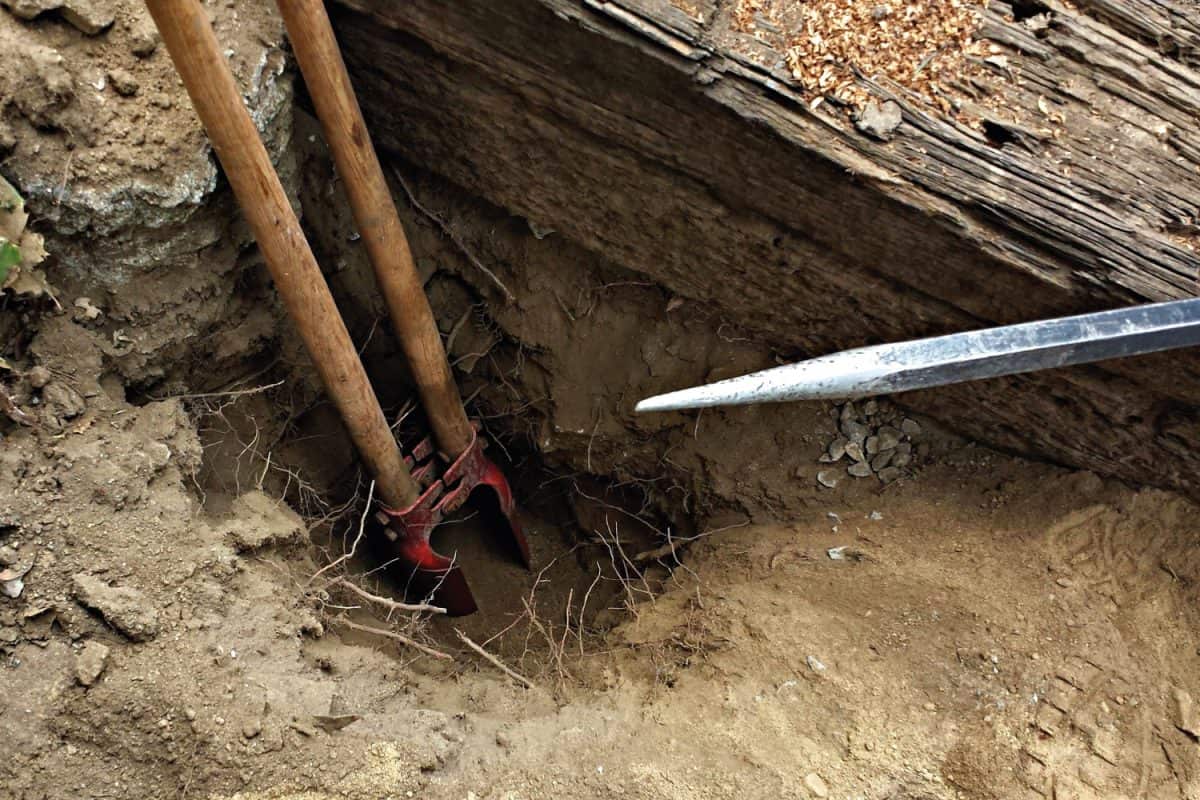
Manual post hole diggers depend mostly on the handles connected to them and how deep they can reach under the ground. These manual diggers are effective for up to 3/4 the length of their handles, so make sure to pick a long one if you need to go deep into the ground.
A standard five-foot-long handle for a manual post hole digger can dig a hole about 3-1/2-feet deep. A manual auger can go deeper than a clamp digger because it will just dig holes as long as you can still turn the auger around.
However, for powered post hole diggers, they can typically dig as deep as 3 feet deep in one go. If you need to go any deeper than that, you should add an extension rod to allow you at least another extra foot when digging.
When measuring how deep your posts should go, you should know how long the posts are. Generally, the height required for the posts to be above the ground should be divided into 3 in order to get the measurement of how deep the holes should be before setting.
For example, if a post needs to be 6 feet above the ground, you should divide the height by 3 and this figure will be the depth required. In this case, the hole must be 2 feet deep.
To make it easier for you to figure out how deep you need to dig, we've included the measurements of most standard posts above the ground.
Post Height (above ground)
- 3 feet (90 cm): 1 foot (12 inches)
- 4 feet (1.2 m): 1.5 feet (18 inches)
- 6 feet (1.8 m): 2 feet (24 inches)
Are There Other Tools Needed To Dig Post Holes?
Setting up and installing a fence requires not only a post hole digger but a whole range of tools that are built to make the job a lot easier. You will surely need a few extra items to make sure that you can make the holes needed for your fence as clean as possible.
Trenching Shovel
A trenching shovel or a fencing shovel is a tool that you will most likely need if you need to dig a little bit more around the area of the hole you made. This tool is very handy because it can also help you pack down the ground that you are digging.
Reciprocating Saw or Compass Saw
A reciprocating saw or compass saw is necessary especially if you are planning to set your posts close to a tree. This tool will help you cut out the roots that might affect the setup of your posts.
Club Hammer
Club hammers are used for hammering down your post markers and your fence posts. After all, everything needs to have a little extra hammering to be set in place.
Hole Tamper
A hole tamper is a tool that you will definitely need after you've filled up those post holes and need to set them up. It helps compact the dirt to ensure that your posts are settled.
Final Thoughts
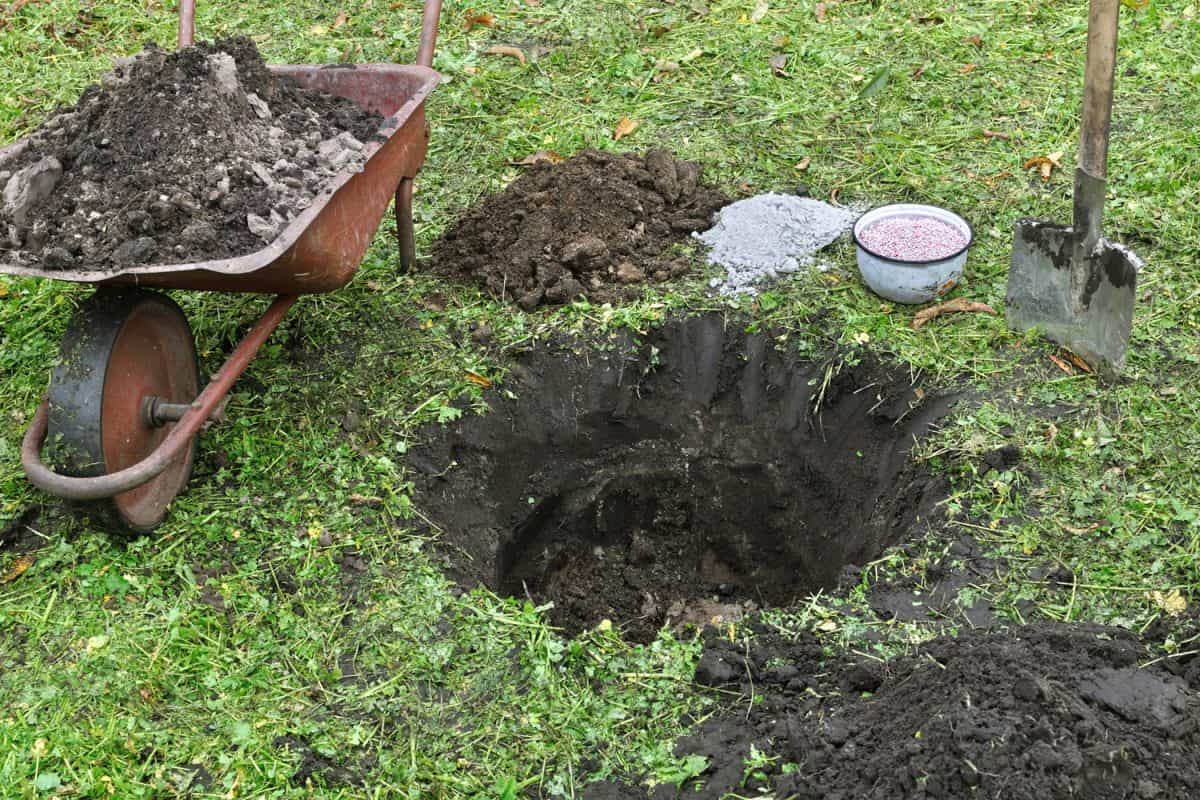
Depending on your needs, there are many post hole diggers that you can use. If you are looking to do a lot of digging not just for setting up fences but also for gardening, a powered post hole digger is a great investment to have. It will definitely make your life easier when it comes to making those holes.
Are you looking to set up your own fence posts? Look no further because we have articles that might be of help to you:









